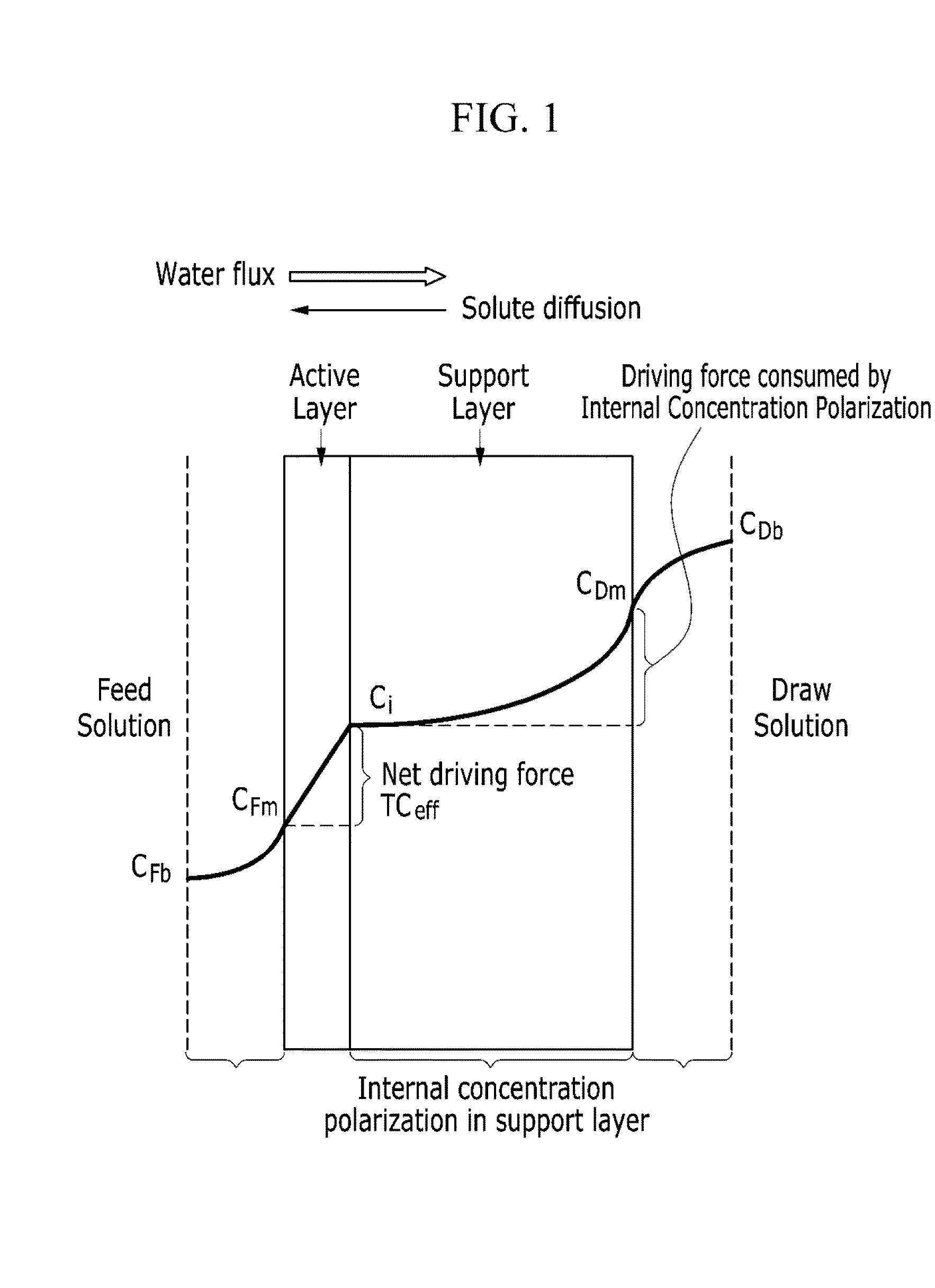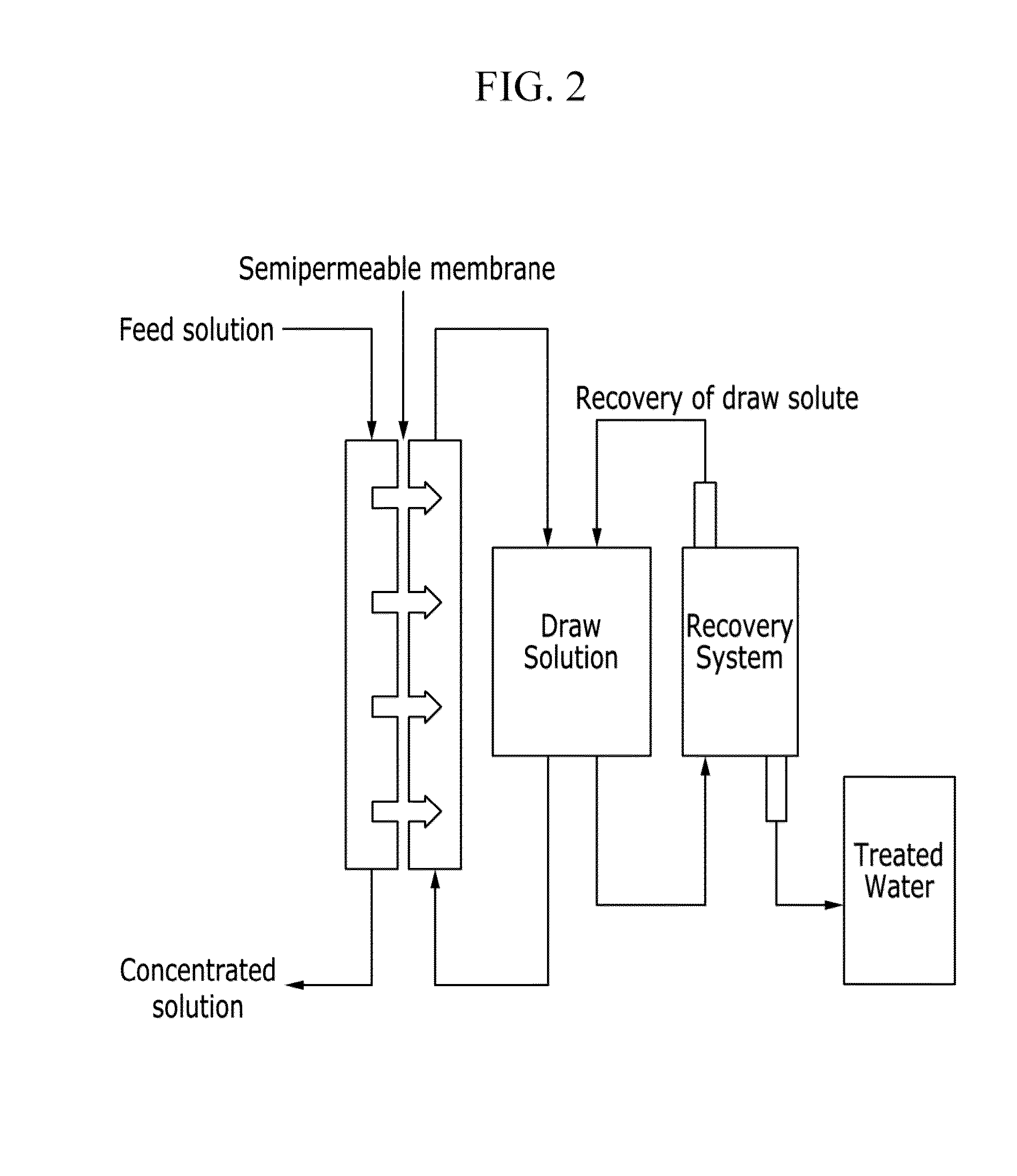Semi-permeable membranes and production methods thereof
a technology of semi-permeable membranes and production methods, applied in membranes, filtration separation, separation processes, etc., can solve the problem of relatively high energy consumption and achieve the effect of improving salt removal performance and high water flux
- Summary
- Abstract
- Description
- Claims
- Application Information
AI Technical Summary
Benefits of technology
Problems solved by technology
Method used
Image
Examples
example 1
[0114]Polysulfone (Solvay, Udel p-3500, number average molecular weight: 80,000) is completely dissolved in DMF to produce a solution having a concentration of 13 wt %. The solution thus prepared is cooled to room temperature and deareated under a reduced pressure to obtain a casting solution. Nonwoven polyester (manufactured by Hirose, product name: 05TH-12S, 17 μm) is immersed in the DMF solution and fixed on a glass plate, and an extra amount of DMF is removed using a rubber roll. The casting solution is spread over the nonwoven fabric, which is then immersed in pure water for a predetermined time and removed therefrom and separated from the glass plate. When the nonwoven fabric is immersed in pure water, DMF is exchanged with water and the phase separation of the polysufone occurs. The porous structure including a polymer thus obtained (hereinafter, referred to as the porous polymer structure) is washed with flowing water to remove the organic solvent, and the structure is dried...
example 2
[0119]A composite membrane is obtained in the same manner as set forth in Example 1, except that instead of the porous polysulfone including silica, the interface polymerization for polyamide is conducted with a porous polysulfone structure including organosilica that is prepared as follows.
[0120]A mixed solution consisting of 1.05 ml of H2O, 0.2 mL of 11.5 M HCl, and 16 ml of EtOH is prepared, and 1 g of 3-aminopropyl-methyl-diethoxy silane is added to mL of the ethanol mixed solution and stirred to produce a 3-aminopropyl-methyl-diethoxy silane solution, which is then uniformly added on a surface of the porous polysulfone structure including silica and allowed to infiltrate into the structure using gravity. The resulting structure is dried at a temperature of 70° C. for 20 minutes to produce the porous polysulfone structure including organosilica.
[0121]An analysis using a field effect scanning electron microscope manufactured by Hitachi Co., Ltd., (model name: FE-SEM S-4500) is ma...
example 3
[0122]Polysulfone (Solvay, Udel p-3500, number average molecular weight: 80,000) is completely dissolved in DMF to produce a solution having a concentration of 13 wt %. The solution thus prepared is cooled to room temperature and deareated under a reduced pressure to obtain a casting solution. Polyester nonwoven fabric (manufactured by Hirose, product name: 05TH-12S, 17 μm) is immersed in the DMF solution, removed therefrom, and fixed on a glass plate, and the extra amount of DMF is removed using a rubber roll. Using a casting knife having a thickness of 150 μm, the casting solution is spread over the nonwoven fabric, which is then immersed in pure water for a predetermined time and removed therefrom and separated from the glass plate. The porous structure including a polymer thus obtained (hereinafter, referred to as the porous polymer structure) is washed with flowing water and the organic solvent is removed, and the structure is dried at room temperature for 24 hours.
[0123]17.5 g...
PUM
| Property | Measurement | Unit |
|---|---|---|
| thickness | aaaaa | aaaaa |
| thickness | aaaaa | aaaaa |
| thickness | aaaaa | aaaaa |
Abstract
Description
Claims
Application Information
 Login to View More
Login to View More - R&D
- Intellectual Property
- Life Sciences
- Materials
- Tech Scout
- Unparalleled Data Quality
- Higher Quality Content
- 60% Fewer Hallucinations
Browse by: Latest US Patents, China's latest patents, Technical Efficacy Thesaurus, Application Domain, Technology Topic, Popular Technical Reports.
© 2025 PatSnap. All rights reserved.Legal|Privacy policy|Modern Slavery Act Transparency Statement|Sitemap|About US| Contact US: help@patsnap.com



